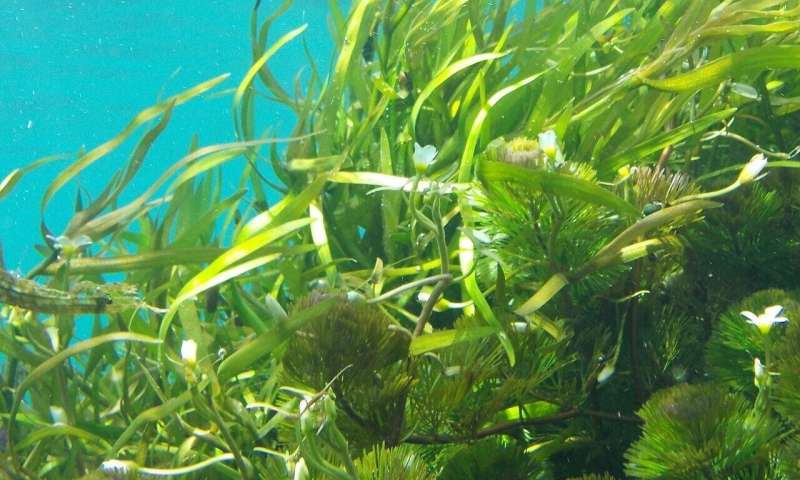July 20, 2020 report
Study of kelp in New Zealand reveals earthquake history

A team of researchers at the University of Otago in New Zealand has found that studying the genes of kelp growing offshore can reveal some of the earthquake history of a given area. In their paper published in the journal Proceedings of the Royal Society B, the group describes their study of kelp samples taken from sites with a history of earthquakes along the New Zealand coast and what they learned from it.
Prior research has shown that kelp can be an aggressive type of seaweed when new opportunities to migrate present themselves. It has also been shown that the heterokont is extremely protective of its own territory—once it is established, other types of kelp cannot move in. In this new effort, the researchers took advantage of both traits to learn more about kelp and the earthquake history of a part of New Zealand.
Prior research has shown that New Zealand experienced a very serious earthquake approximately 800 years ago on South Island. The earthquake was so severe that some parts of the seabed were raised above the water line. The researchers noted that such an earthquake would very likely have laid bare some newly formed seafloor—ripe for occupation by kelp and other seafloor life. The team wondered if some of the newly formed seafloor might have been populated by migrating kelp, and if so, whether evidence of it existed in their DNA.
To find out, the researchers collected a large number of kelp samples along the fault line near the town of Dunedin. Back at their lab, they conducted a genetic study of the samples and found evidence of new kelp moving into an area previously only occupied by old kelp. They were able to make out the territorial boundaries of the kelp just by looking at their genes. And they were also able to see that the new kelp had moved into the area around the time of the earthquake 800 years ago. The kelp that live there today are their descendants.
The researchers suggest their results show just how territorial kelp is—there was very little evidence of old and new kelp mixing, which meant the new kelp had held its ground for 800 years.
More information: Elahe Parvizi et al. The genomic footprint of coastal earthquake uplift, Proceedings of the Royal Society B: Biological Sciences (2020). DOI: 10.1098/rspb.2020.0712
Journal information: Proceedings of the Royal Society B
Provided by Science X Network
© 2020 Science X Network



















